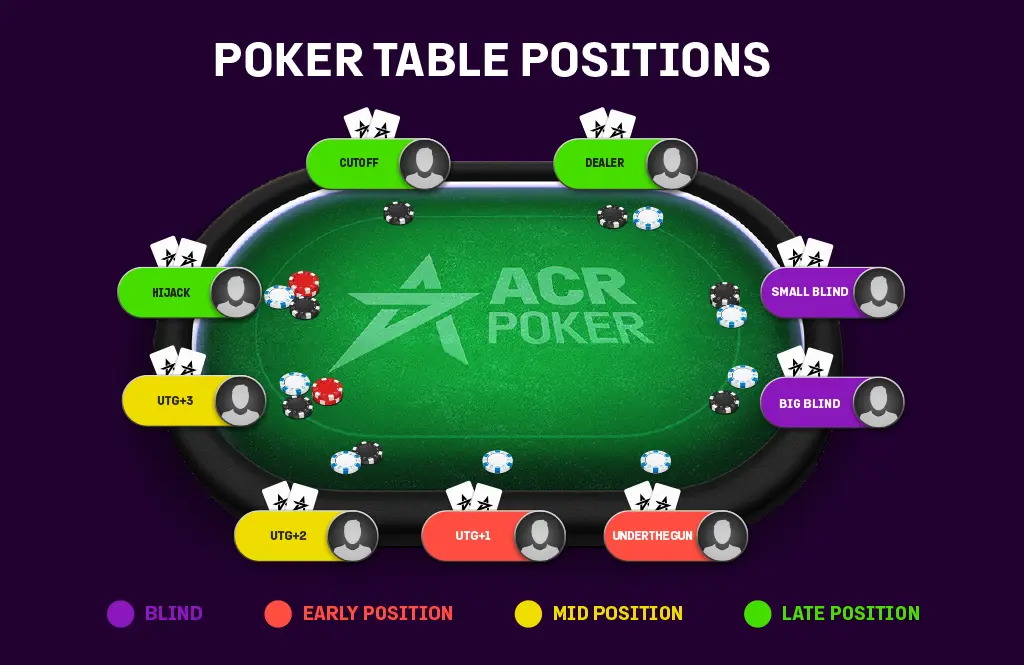Perfect for newcomers looking to start their poker journey. This guide will walk you through everything you need to know to sit down at your first poker table with confidence.
The Objective of Poker
Before we dive into the mechanics, let’s understand what you’re trying to accomplish. Poker is a game of skill, strategy, and psychology—but it all starts with a simple goal.
Your Goal
In poker, you’re trying to win either by:
- Having the best five-card hand at showdown
- Making your opponents fold before the showdown through strategic betting
Essential Poker Terms
Every game has its own language, and poker is no exception. Understanding these key terms will help you follow along and communicate effectively at the table.
- Blinds Small forced bets placed by two players to the left of the dealer to kickstart the betting.
- Pot The pool of chips or money that players compete to win in each round.
- Hole Cards The two personal cards dealt face-down to each player at the start of a round.
- Community Cards Shared cards dealt in the center of the table that players use along with their hole cards.
- Showdown The final phase where players still in the game reveal their hands to determine the winner.
- Fold To exit the round, giving up any claim to the pot. A strategic move when your hand isn’t strong enough.
Setting Up the Game
Understanding how a poker game is organized will help you feel more comfortable when you first sit down at a table. Here’s what you need to know about the basic setup.
Basic Setup
- Typically played with 2-10 players at a table
- Dealer button rotates clockwise after each hand
- Small blind and big blind positions are established
- Initial pot is created through forced bets (blinds)
Understanding the Cards
In Texas Hold’em, there are two types of cards you need to understand:

Community Cards
These are the five shared cards dealt face-up in the center of the table. They’re revealed in stages:
- Flop: First three cards
- Turn: Fourth card
- River: Fifth card
Hole Cards
These are your two private cards dealt face-down at the start of each hand. Only you can see them, and they’re combined with the community cards to make your best five-card hand.
How a Poker Round Works
A typical Texas Hold’em round consists of four main betting stages. Understanding this flow is crucial for making informed decisions throughout the hand.
-
Pre-flop
Each player receives two face-down cards (hole cards). Starting with the player to the left of the big blind, players choose to call (match the big blind), raise (increase the bet), or fold (exit the round).
-
Flop
Three community cards are revealed in the center. Another betting round begins with players able to check, bet, raise, or fold.
-
Turn
A fourth community card is dealt, followed by another betting round with the same options.
-
River
The fifth and final community card is revealed, leading to the last betting round before showdown.
Key Concepts for Beginners
Beyond the basic rules, these fundamental concepts will help you understand the strategic elements of poker and start thinking like a player.
Bluffing
Pretending your hand is stronger than it is to make opponents fold. A crucial skill that requires practice and observation.
Bankroll Management
Set and stick to a budget for your poker sessions. Start with low stakes until you’re comfortable with the game.
Position
Your position at the table matters significantly. Acting last gives you an information advantage over other players because you can see how they act before making your decision.

🟣 Blinds
Small Blind and Big Blind – forced bets that start the action
🔴 Early Position
Under the Gun (UTG), UTG+1 – act first, need stronger hands
🟡 Mid Position
UTG+2, UTG+3 – moderate advantage, can play more hands
🟢 Late Position
HIJACK, CUTOFF, DEALER – best positions, can play more hands
Why Position Matters
- Information advantage: Later positions see how others act first
- More playable hands: You can play weaker hands from late position
- Better bluffing opportunities: Acting last gives you more control
- Pot control: You can check behind when you’re unsure
Poker Etiquette
Poker is a social game, and following proper etiquette ensures everyone has a good experience. These unwritten rules help maintain a respectful and enjoyable atmosphere.
Table Rules
- Don’t reveal your cards until showdown unless folding
- Avoid slow rolling (deliberately delaying showing a winning hand)
- Stay focused and avoid distracting other players
- Act in turn and make decisions in a timely manner
Beginner’s Tip
Start with “play money” games online or low-stakes home games with friends. This allows you to learn the mechanics without financial pressure. Remember, poker is a game of patience and learning – take your time to develop your skills!
Ready to Start Playing?
Now that you understand the basics, it’s time to put your knowledge into practice. Join thousands of players at Americas Cardroom and start your poker journey today.
Create Your Free Account
